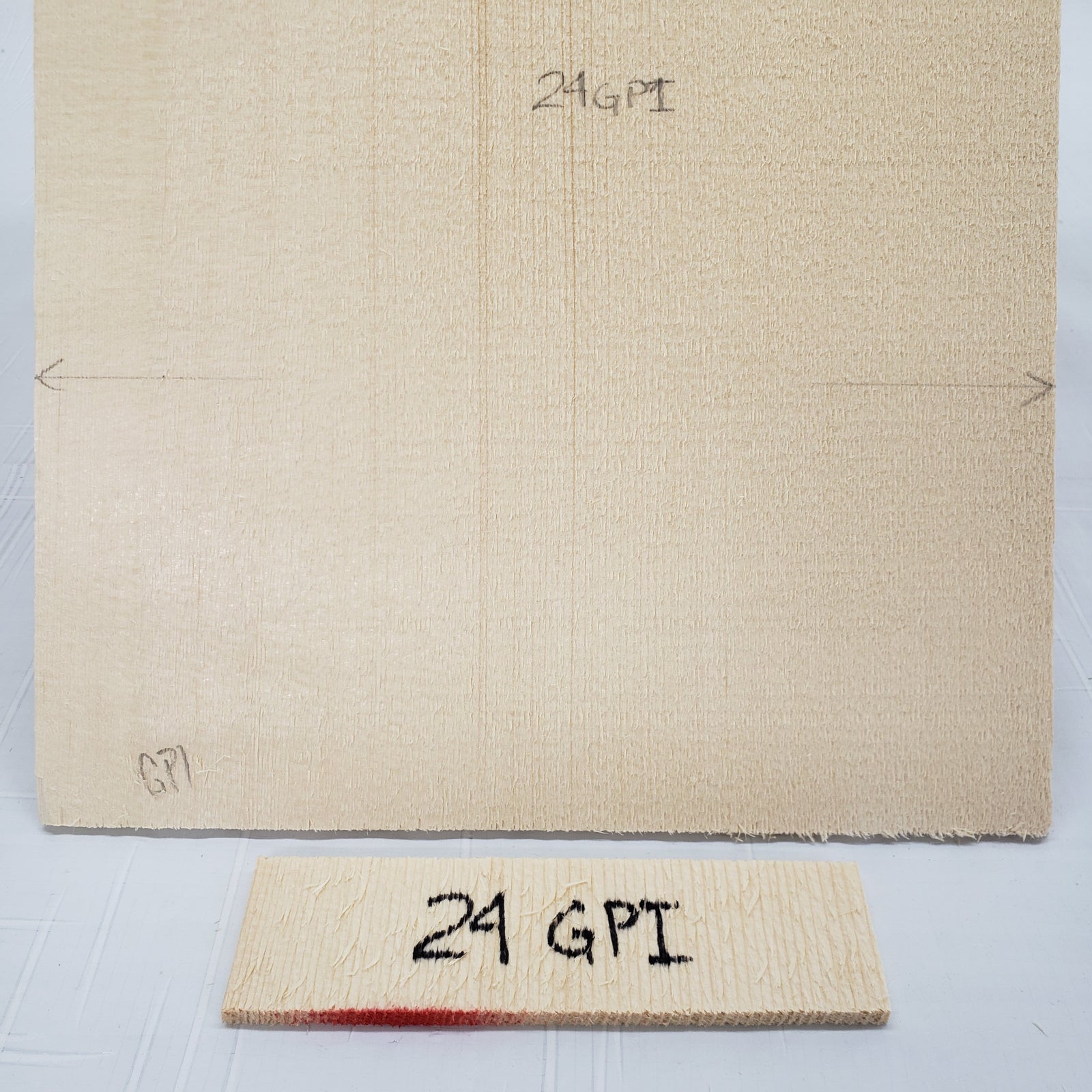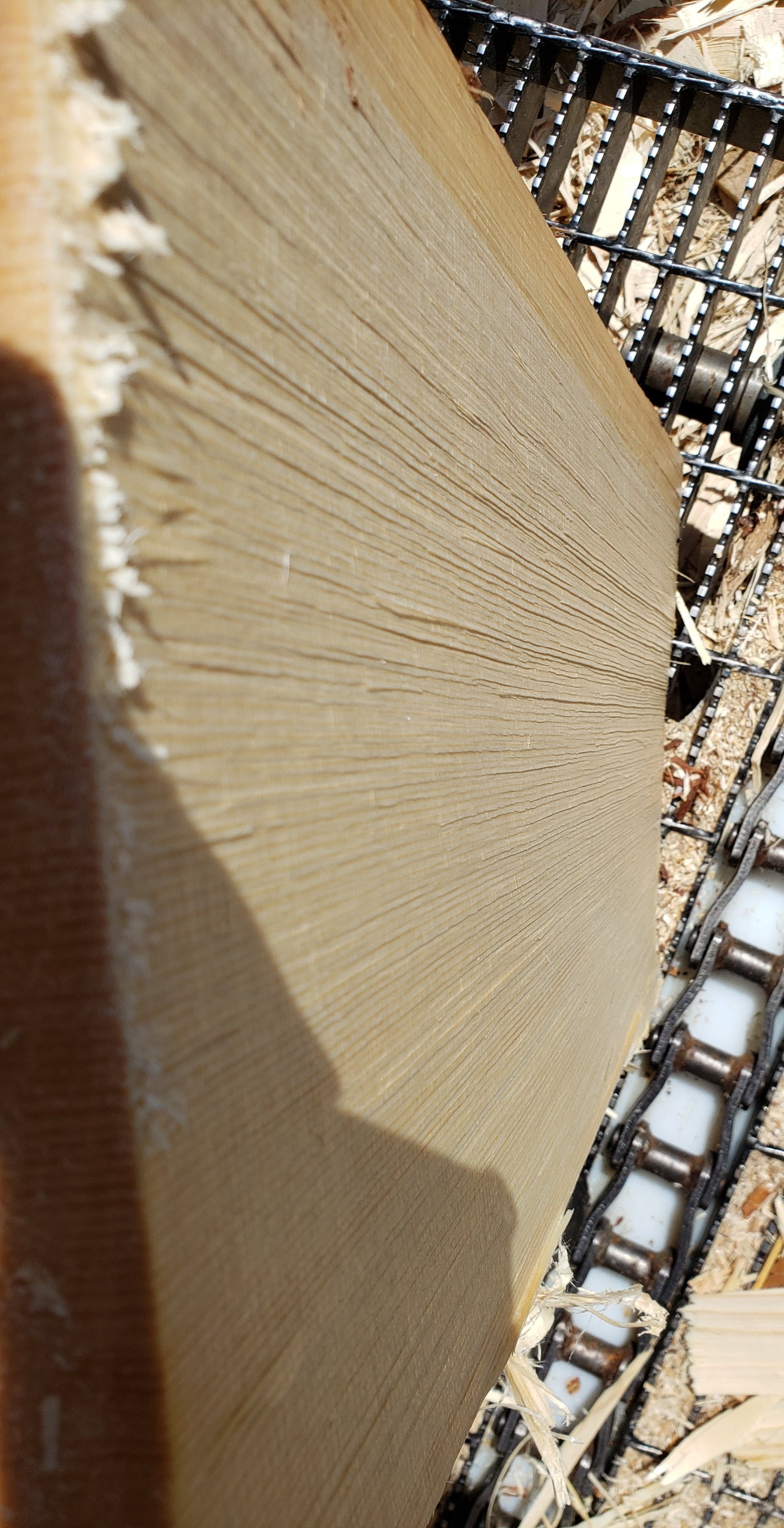Each MSC soundboard is specifically manufactured to maximize stiffness and visual appeal. Every grade attempts to create a comparable grouping of individual quality attributes. Being a full-time producer, we are able to maintain consistent grading and provide repeatable value in each order. You will find grades are similar to expectations you’re accustomed to, perhaps better, given our direct access to the forest and our luthierie background.
Variance of individual characteristics are normal within each grade but becomes less as quality increases. We are able to prioritize certain features common to a grade upon request, these preferences are listed under each grade in our catalog.
We’ve found it confusing using the letter “A” repetitively to describe grades. I never received an AA on a school test, or an AAA or 5A or “Master” if I happened to do really well… (which wasn’t too often). As such, the MSC nomenclature goes like this.
MSC GRADE = (INDUSTRY EQUIVALENT)
#1 grade = (Master, 5A, AAAA)
#2 grade = (AAA, 1AAA, 4A)
#3 grade = (AA, 1AA, 3A)
#4 grade = (AA-, 1A, 2A, SA, LAA)
#6 grade = (A, 2A etc.)
#7 grade = (LA, A-)
#8 grade = (2B, Paint)
All sets are specifically manufactured for soundboard construction maximizing stiffness and visual appearance. Particular focus is placed near the glue-line.
Wood within the template area is what we consider during the grading process. At times the final grade depends on the positioning of the template. We mark the template position whenever grade depends on it. Template will also be marked when rationale for our decision is helpful or to display clearance around a defect. We deem the soundhole to be a suitable area to avoid occasional defect. Beneath the neck is another area that may be used to avoid non-structural features. Finally, in some cases the board will claim a higher grade by reducing guitar size, these sets may allow for a dreadnought template but be graded as a Classical size.
Grade attributes are weighted heavier:
- The nearer they are to the glue-up line
- If they are more perpendicular to length of top vs. lengthwise
- The longer they are
- As color intensity and/or opacity increases
Average grain lines per inch over width of lower bout. (Width/Grain lines = GPI)
Describes how cleanly wood fiber naturally splits or cuts. The best soundboards split and cut cleanly.
Grain lines constituted of very dense, brittle fiber in both summer and winter growth cycles. Dark brown appearance, results from tree compensating against natural forces during its lifespan. At times exceedingly stiff, often not cosmetically pleasing.
Pronounced grain in the winter growth cycle only, often very attractive if fine and evenly spaced. Typically results in extremely stiff soundboards with amazing tone, and an especially pleasing visual appeal.
Quarter and Stiffness
These criteria are referenced at lower bout, as templated. Please note: Stiffness is not automatically correlated to 90° end grain.
Minimum size
Occasional sets allowed within grade as follows: 4.0mm thick at 215mm lower bout western grades, 4.0mm thick at 195mm lower bout classical grades. These sets may be present because of very high wood quality which far offsets size limitations.
Stain
Yellow, gray or other surface stain is allowable if removed at 4.0mm thickness, sanded from face. Occasional verification sets may be included.
Reverse side
Defect allowed up to #6 grade as long as not exposed on finished face, #5 or better up to 2% qty. as long as no other defect is present.
Sapwood
May be present in any grade as long as appearance qualifications are met.
Fiber influenced in lengthwise orientation by the presence of a knot, or other internal disturbance. Manifest as “fuzzy/smooth” area in rough sawn state, light/dark area in finished state. Depending on severity, structural considerations can become a concern. “Soft knot shadow” describes gradual transition into and out of affected area, “Strong knot shadow” describes abrupt transition and more severe effect.
Stiffness
Resistance to flexing, tested specifically in the lateral axis (perpendicular to length). Fiber quality, cell structure, cut method, end grain angle, runout and/or GPI influence stiffness. Each sound board exhibits individual qualities.
Color Contrast
Difference in color from one side of bookmatched soundboard compared with the other. Most noticeable at glue-up if improperly cut.
Grain Progression
Pattern that grain lines follow from one edge of the soundboard to the other.
Grain Consistency
Regularity of grain spacing from one edge of the soundboard to the other.
Straightness
Grain lines are straight lengthwise.
Wavy
Intermittent grain deviation from straight line with return. Often left and right.
Reverse Side
Defect allowed up to #6 grade as long as not exposed on finished face, #5 or better up to 2% qty. as long as no other defect is present.
Runout describes the natural lengthwise orientation of wood fiber (grain) when not parallel with the cut face of the soundboard. Runout is manifest when wood fibers penetrate at an angle into the cut face causing “hair” on the sawn surface. A properly manufactured soundboard will align natural grain orientation parallel with cut orientation and exhibit smoothly riven fiber, especially at the glue-up where string tension is most focused.
We manufacture all soundboards from split billets, a method that clearly reveals natural grain orientation. This allows our sawyers to align the cut at the glue-up edge of the soundboard with the natural grain of the tree. If present, it places runout at the lower bout edge of template area, thereby trimming most away. It also maximizes lengthwise stiffness, eliminates color contrast and maintains lateral stiffness.
Since stiffness and visual appeal are our paramount grading priorities, MSC grade constraints for runout always relate to these two priorities. They have been established through extensive testing for stiffness, strength and color consistency. When occasionally present, runout is also qualified with overall smoothness of finish (riving) to reach final grade determination. When properly manufactured, runout does not affect color contrast, tone or stiffness.






















